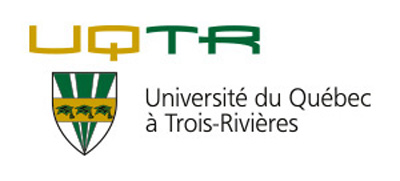Related projects
Discover more projects across a range of sectors and discipline — from AI to cleantech to social innovation.
Mitacs brings innovation to more people in more places across Canada and around the world.
Learn MoreWe work closely with businesses, researchers, and governments to create new pathways to innovation.
Learn MoreNo matter the size of your budget or scope of your research, Mitacs can help you turn ideas into impact.
Learn MoreThe Mitacs Entrepreneur Awards and the Mitacs Awards celebrate inspiring entrepreneurs and innovators who are galvanizing cutting-edge research across Canada.
Learn MoreDiscover the people, the ideas, the projects, and the partnerships that are making news, and creating meaningful impact across the Canadian innovation ecosystem.
Learn MoreThe gram negative bacteria Coxicella burnetii and Francisella tularensis are the causative agents of Q fever and tularaemia, respectively. Infection by either organism can result in high mortality rates, especially in immuno-compromised individuals; in addition, there are very limited options for detection of both C. burnetii and F. tularensis. Recent evidence shows that both bacteria have functional type II secretion system (T2SS) and type IV pilus (T4P), and that functional T4P affect virulence. Sequence analysis indicates that proteins cbu0156 and ftn0389 are the major pilins of C. burnetii and F. tularensis, respectively; several other proteins, including cbu0155, cbu1891, ftn0116, and ftn1137 have been identified as T2SS effector proteins. Sequence-based modelling of cbu0156 identifies this protein as a PilA homolog and predicts a structure similar to that of the P. aeruginosa pilins. Despite these advances, little is understood of these proteins at the structural level, how they affect virulence, or how they can be used for detection of C. burnetii or F. tularensis infection. The aims of this research are (1) the structural and biophysical analysis of the Coxicella and Francisella pilins and T2SS effector proteins, and (2) evaluation of these pilins for protein nanotube (PNT) assembly and biosensor development. These studies will provide detailed structural information into the pilins and multiple T2SS effector proteins, leading to novel therapeutics, and provide a framework for the development of protein-specific biosensors for C. burnetii and F. tularensis. We are targeting the determination of the high resolution structures of C. burnetii and F. tularensis pilins (cbu0156, cbu0412, ftn0389) and T2SS effector proteins (i.e. cbu0155, cbu1891, ftn0116, ftn1137). Proteins will be initially purified as His-tagged constructs and crystallized using standard procedures; fusion protein (MBP, GST, etc.) constructs will be utilized if solubility issues are encountered. X-ray data will be collected in-house and/or at an appropriate synchrotron facility as appropriate for structure solution. Where possible, we will use molecular replacement (MR) for the structure solution using the known structures of type IV pilins, homology-based models or structures of a fusion-protein partner (i.e. MBP, GST etc.) as search models. Proteins will also be crystallized as Se-Met proteins, in addition to heavy atom soaking, for experimental phasing as required. Structure solution and refinement will use available software packages, for example the CCP4 and Phenix suites of programs. All refined models and diffraction data will be made available through deposition in the Protein Data Bank.
Gerald Audette
Yining Li
Chemistry
York University
Globalink
Discover more projects across a range of sectors and discipline — from AI to cleantech to social innovation.
Find the perfect opportunity to put your academic skills and knowledge into practice!
Find ProjectsThe strong support from governments across Canada, international partners, universities, colleges, companies, and community organizations has enabled Mitacs to focus on the core idea that talent and partnerships power innovation — and innovation creates a better future.













































































































































































































































































































